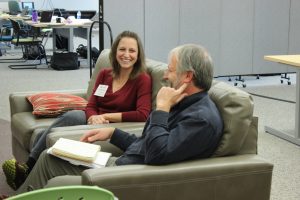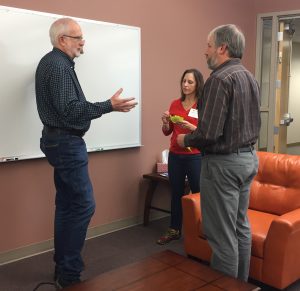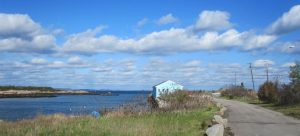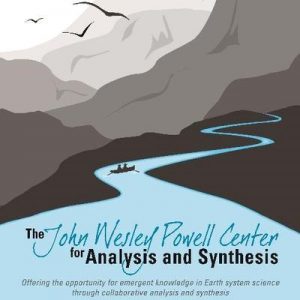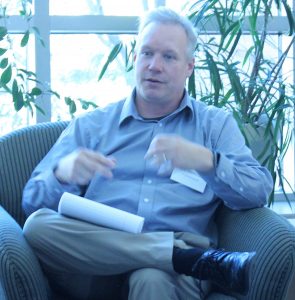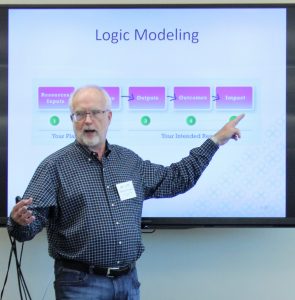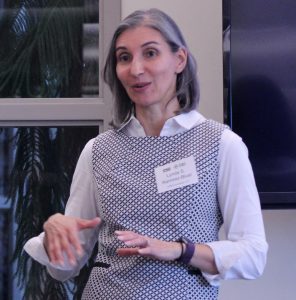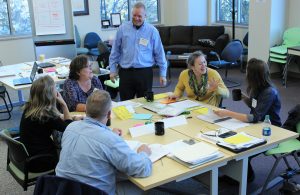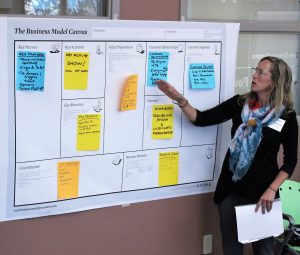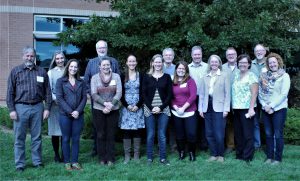
Tom Arsuffi has been Director of the Llano River Field Station (LRFS) since 2005. Under his leadership, this Texas Tech outpost in Junction, Texas has grown into a full-fledged field station supporting an impressive array of research, education, and engagement programs. In 2015, Tom took part in the ESA course in Sustaining Biological Infrastructure (SBI) to hone the business and planning skills needed to maintain the field station and support the watersheds and people of the Hill Country region.
[perfectpullquote align=”right” size=”22″]”Even though I had learned a lot …on the fly, I thought I needed more training to do a better job as a field station director.” [/perfectpullquote]
The land that makes up the Llano River Field Station has been held by Texas Tech since the 1970s, but it hasn’t always been a field station. When the university decided to use the space to develop more programs, Tom jumped at the opportunity to apply, and help grow this university outpost into a functioning field station.
Thirteen years later, LRFS is that, and more.
“We do everything field stations do,” Tom explains. That includes supporting ongoing research on the hydrology and ecology of the Llano River and surrounding areas, as well as providing courses for undergraduate and graduate students and facilities for visiting researchers.
But LRFS also runs an array of programs that serve populations beyond research scientists. Highlights of these programs include a K-12 Outdoor School, where students from Texas mega-cities are immersed in the STEM and nature of the Hill Country to combat the spread of Nature Deficit Disorder, and the development of the Upper Llano River Watershed Protection Plan, in partnership with multiple stakeholder groups.
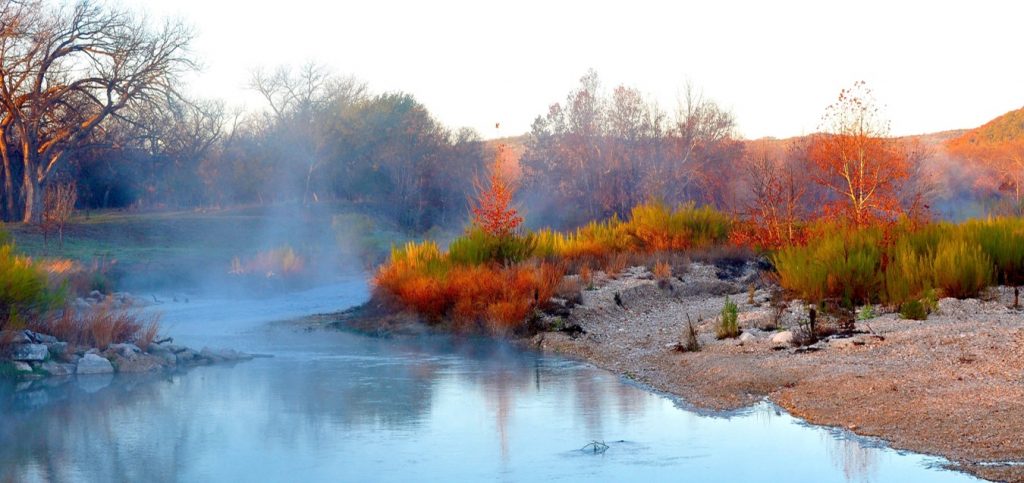
The Llano River, home to the Llano River Field Station.
“Engagement is something I always thought was really important as a mission for the field station,” says Tom. “I thought it was really critical that the research we do has applied applications. That it’s meaningful to the public, the ranchers, the locals, the agencies, and so forth.”
Tom’s experience in ecological research prepared him well to manage the research and teaching aspects of this work. But engagement with a diversity of stakeholders requires more than the skills that are typically taught in graduate school. That’s where the ESA Sustaining Biological Infrastructure (SBI) course came in. SBI is a three-day course that trains scientists in the strategic planning, finance, and communication skills needed to sustain long-term projects.
“When I looked at SBI, I saw elements of development, of business plans, of effective science communication to lay people,” Tom says. “Even though I had learned a lot of those things on the fly, I thought to myself I needed more training to do a better job as a field station director.”
So in June 2015, Tom headed to Washington D.C. to take part in SBI. There, he spent three days working with expert faculty and a cohort of peers to develop these science-supporting techniques.
“One of the benefits of SBI is there’s a lot of hands-on types of learning. There are good speakers, there are good presentations, the workbook is fantastic—and you actually get to practice some of the skills,” Tom explains.
With other course participants, he developed a value proposition for the field station, brainstormed a diverse array of potential funding sources, and got feedback on a mock pitch to funding agencies.
[perfectpullquote align=”full” size=”22″]”One of the benefits of SBI is there’s a lot of hands-on types of learning. There are good speakers, there are good presentations, the workbook is fantastic—and you actually get to practice some of the skills.” [/perfectpullquote]
And he brought these lessons home with him, focusing especially on developing proposals for foundations, the “untapped resources” for research funding.
That work proved successful. Pitching to different state agencies and foundations, Tom was able to link the field station to a diverse array of funding sources and partners. For example, LRFS worked with the Texas A&M University Water Resources Institute to gain EPA funding for an Upper Llano Watershed Protection Plan aimed at keeping the watershed healthy. The field station is also helping in the organization of the Hill Country Conservation Network, which brings together 160 local conservation groups to coordinate, maximize and assess efforts. Currently, he’s developing a collaboration with the Texas Parks and Wildlife Department to link Llano River Field Station to other pockets of protected land in the watershed.
This diverse engagement has been recognized through a series of awards. Recent triumphs include receiving the Kellogg Foundation Exemplary Project Award, the Universities Council on Water Resources Public Service and Education Award and the Texas Tech University Presidential Award for Engaged Scholarship.

Working with students in the Llano River.
Tom has lots of ideas about how to continue to understand and extend the field station’s role for the lives of local Texans. Today, he employs techniques like social network analysis, analyzing the LRFS position to answer the question, “how do we fit into a larger constellation of organizations?”
Because that, Tom says, is at the center of taking on today’s environmental problems. “Back when I was much younger, and there were environmental issues, you could address and solve those problems typically as an individual or a single agency—they weren’t that tough.”
Today’s problems are more complicated, and wrapped up with ever-growing populations and political division.
Tom’s advice for the situation is clear: “You can’t solve these problems by yourself, so one of the things you’d better be thinking about doing is getting to know the people and the agencies which align with or are adjacent to your area of expertise, so you can build these coalitions to solve complex issues.”
What does it take to build those coalitions?
“This is where the trust and communication comes in,” Tom says. “This is where it comes back to science communication, and that’s what the SBI is all about.”
…
Tom’s work at the Llano River Field Station is highlighted in this year’s SBI course as a case study, so other participants have the chance to learn from his success. To learn more about this year’s SBI course offerings, click here. Registration for our June course closes April 20th!
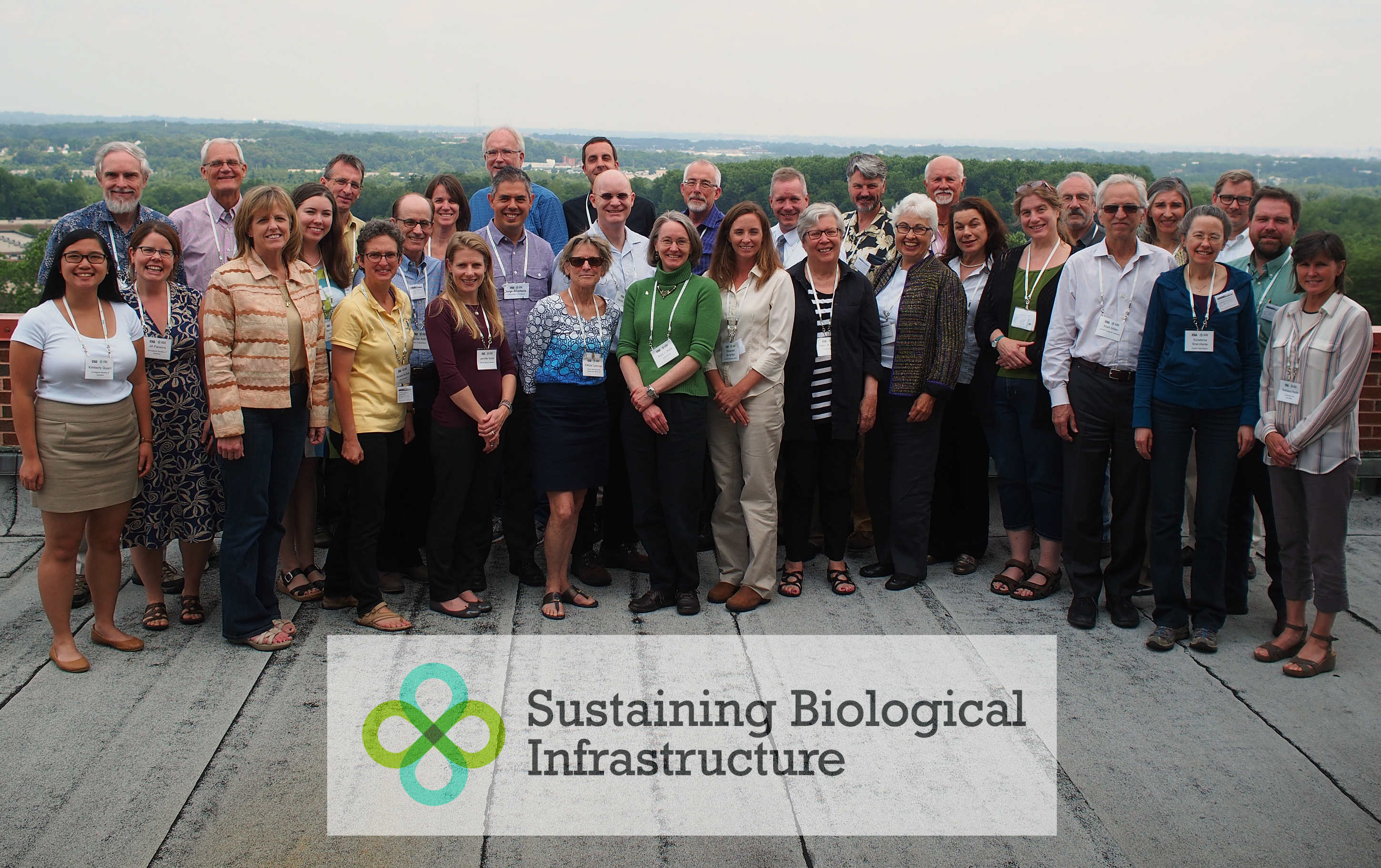
Participants in the 2015 SBI training course.



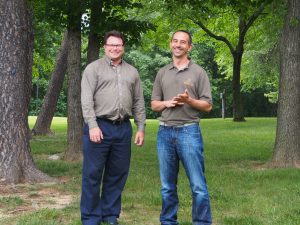

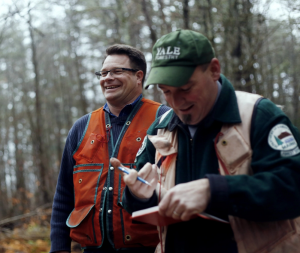

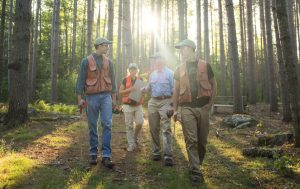
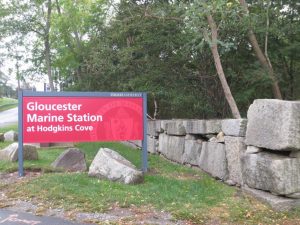 In 2015, The University of Massachusetts, Amherst, had a pressing decision to make about the Gloucester Marine Station: sell it, or reinvest and repurpose the space. The station played host to several biological research programs over four decades since its opening in the 1970s, but was in need of major infrastructure repair and a new funding model if it was to be successful into the future. When a faculty member received an NSF grant to address those issues, UMass decided to move forward with reinventing the station into an extension outpost and cutting-edge research station. With plans for a new seawater system, dock, office spaces, and lab space- the vision of the new Gloucester Marine Station was starting to take shape.
In 2015, The University of Massachusetts, Amherst, had a pressing decision to make about the Gloucester Marine Station: sell it, or reinvest and repurpose the space. The station played host to several biological research programs over four decades since its opening in the 1970s, but was in need of major infrastructure repair and a new funding model if it was to be successful into the future. When a faculty member received an NSF grant to address those issues, UMass decided to move forward with reinventing the station into an extension outpost and cutting-edge research station. With plans for a new seawater system, dock, office spaces, and lab space- the vision of the new Gloucester Marine Station was starting to take shape.